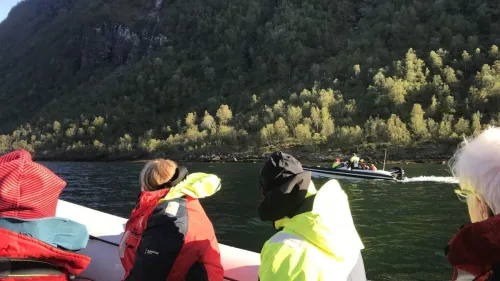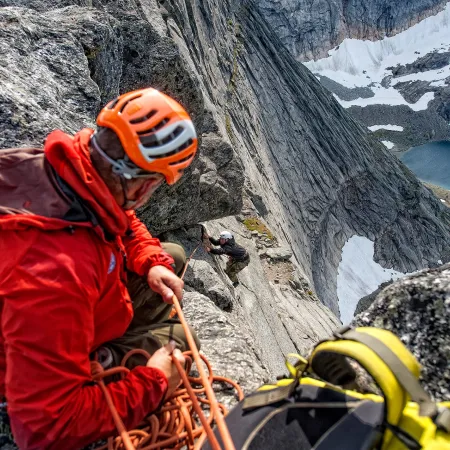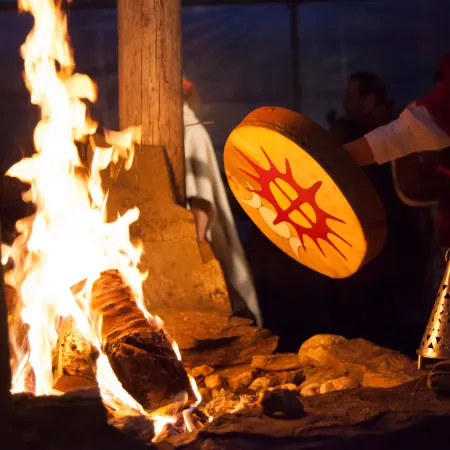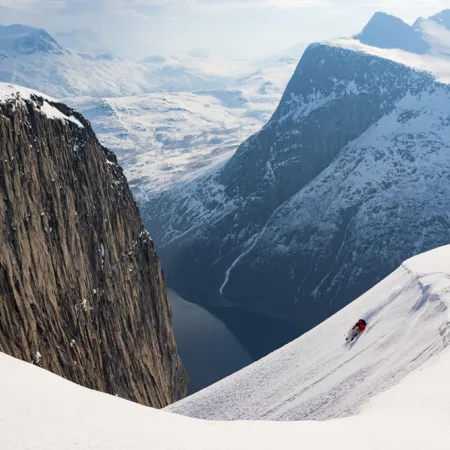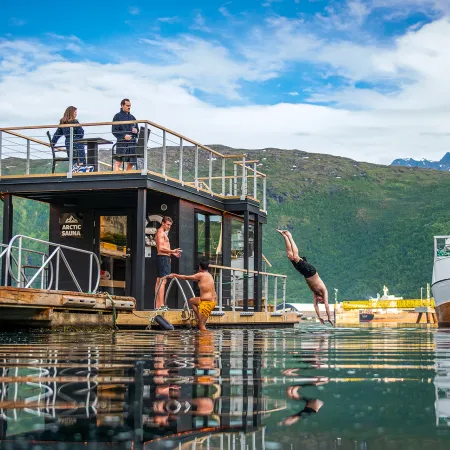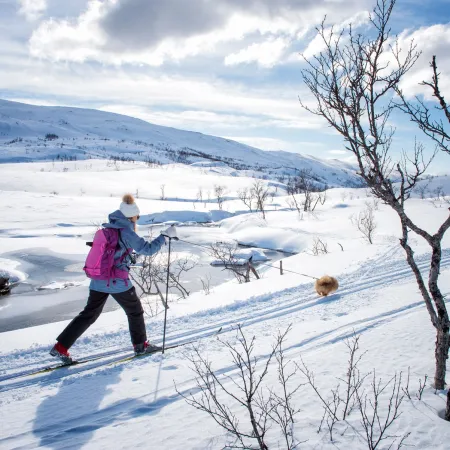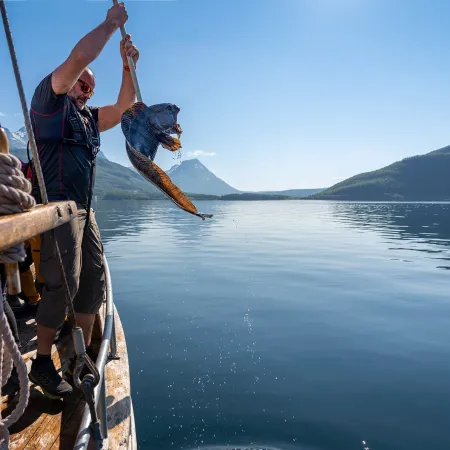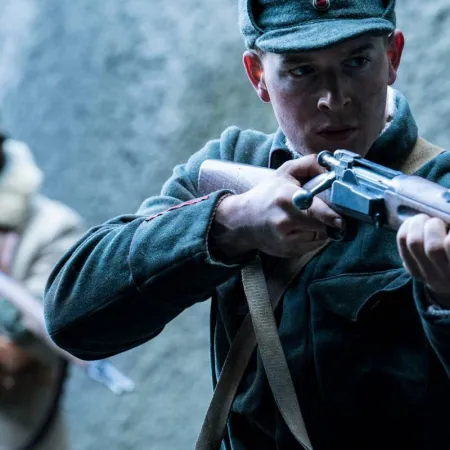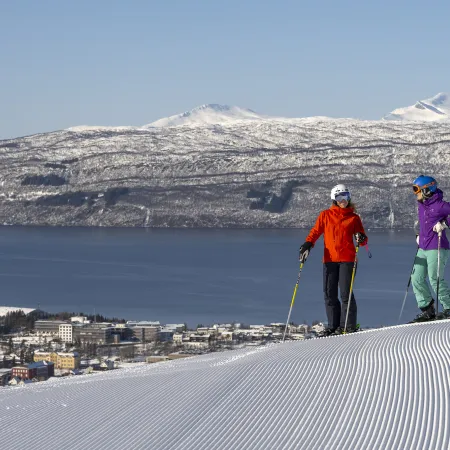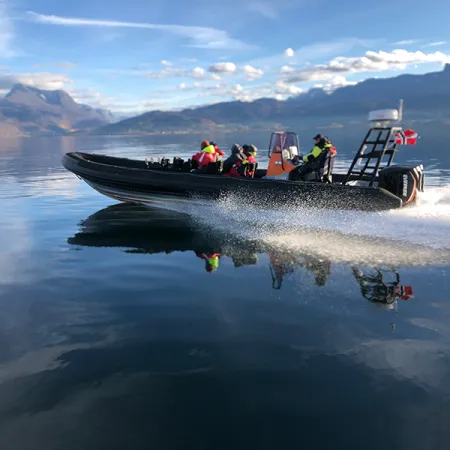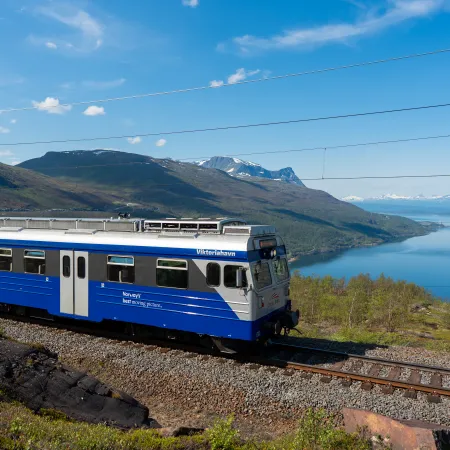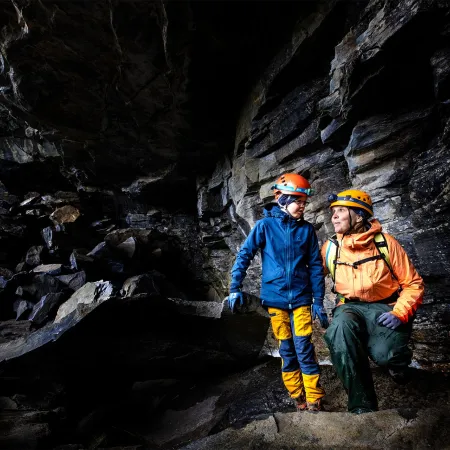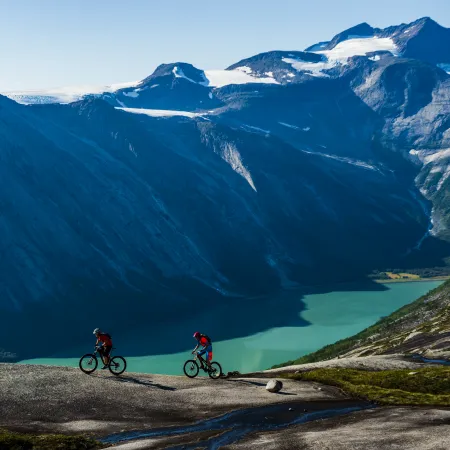Hike across
Norway in a day
Embark on an extraordinary journey across Norway, where a single day reveals a tapestry of dramatic landscapes, rich history, and unforgettable adventures. Starting in the coastal town of Narvik, this adventure offers a seamless blend of history, nature, and breathtaking landscapes. From the stunning Ofoten Railway to the historic Rallarveien trail and the serene Rombaksfjord, this journey showcases the very best of Northern Norway.
Practical information
Booking: Secure your journey by booking train tickets at www.sj.se and reserving boat and Sildvik transport tickets in advance below for a smooth and hassle-free experience. If you have any questions, feel free to contact Kikki Westerheim at Narvik Mountain Lodge by calling +47 99 538 045.
Timetable: The train departs from Narvik Station at 10:30, arriving at Riksgränsen Station at 11:25. The boat departs from Rombaksbotn Quay at 18:00, with the bus reaching Narvik Station at 19:00. Boat transport is available from June 22nd to September 15th.
Tips for travelers: This journey is highly recommended for those seeking a unique and memorable experience. Comfortable footwear and layered clothing are essential, as the weather can vary.
Babang Deshommes
1. A scenic ride on the Ofoten Railway
The journey begins at Narvik station aboard the Ofoten Railway, a historic rail line renowned for its dramatic views. This 43-kilometer stretch winds through steep mountainsides high above the Rombaksfjord, providing passengers with an unforgettable visual experience. The route climbs from the fjord to the Swedish border at Riksgränsen, offering a glimpse of a windswept highland plateau.
Each kilometer reveals new wonders: cliffs, tunnels carved deep into the rock, and sweeping views of the surrounding fjords and mountains. At Riksgränsen, passengers can step off and prepare for the next stage of the adventure; crossing Norway by foot
In the 19th century, tapping into northern Sweden's vast iron ore riches was no easy feat. The terrain posed difficulties, the weather was unforgiving, and the nearest port lay hundreds of kilometers away.
The Construction
This led to the birth of the Ofoten Line, a crucial railway connecting Kiruna's iron mines to the ice-free port of Narvik. Itinerant workers, so-called "navvies" sought their fortune in what was referred to as Europe's "Klondyke", and at most over 5,000 people were involved in the construction of the track. Building the railway was a colossal feat, ascending over 500 meters in just four miles and carved into a mountainside ledge above the fjord. Completed in 1902, the 168-kilometer engineering marvel finally unlocked Kiruna's iron reserves.
Electrification & War
Initially, steam locomotives hauled iron-laden trains, managing the haul through winter's chill without a hitch. By 1923, the line switched to electric power for increased efficiency. Beyond its engineering marvels, the Ofoten Line has a rich history. It was a critical strategic route during World War II, witnessing the Battle of Narvik's fierce combat, lending a dramatic narrative to the scenic railway.
Heavy Haul
Today, this railway remains vital, transporting 10-12 iron trains daily, each carrying 68 wagons laden with 100 tons of ore—enough for 68,000 cars! No wonder LKAB must use the strongest locomotives on the market. It's shipped over 1 billion tons of iron ore in its 120-year history. And it's not just ore; 90% of groceries from Southern to Northern Norway travel this route. As you ride the Ofoten Line, you're journeying through history—from miners' dreams to wartime tales—amidst awe-inspiring Nordic landscapes.

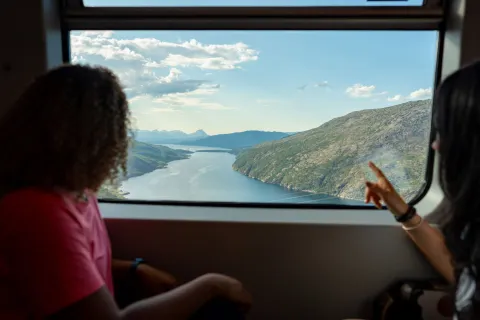
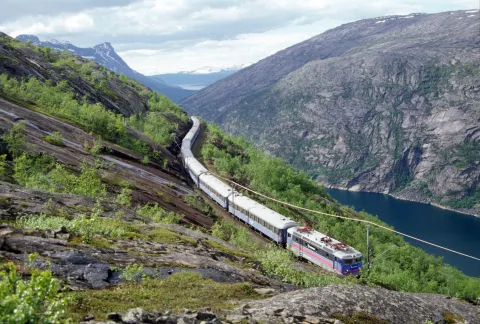
Sverre Hjørnevik
2. Hiking the historic Navvy road
The trail is much more than a hiking path, it is a journey through history, culture, and some of Northern Norway’s most stunning landscapes. Spanning 16 kilometers, this trail was originally constructed by railway workers (or "navvies") over a century ago, as part of the ambitious effort to build the Ofoten Railway. Today, it stands as a tribute to their enduring legacy and an invitation for adventurers to walk in their footsteps.
The trail begins at Riksgränsen, where the barren highland plateau stretches endlessly under a wide-open sky. The air is crisp and invigorating, and the terrain is dotted with small lakes, patches of heather, and hardy mountain birch trees. As hikers make their way along the path, they will encounter several remnants of the railway’s construction: stone walls, bridges and interpretive signs detailing the immense effort and ingenuity that went into creating this Arctic industrial marvel.
Descending into Norddalen Canyon, the landscape transforms dramatically. Here, the trail hugs the side of steep cliffs, offering panoramic views of the canyon’s depths below. Roaring waterfalls plunge into the valley, their sound echoing through the air and creating a natural symphony. Alongside the trail, modern iron ore trains, each carrying up to 68 wagons, make their journey from Kiruna’s mines to Narvik’s ice-free harbor. Seeing these massive trains up close is a reminder of the region’s industrial heritage and its connection to the global economy.
As the trail continues, hikers will pass through areas rich in flora and fauna. Depending on the season, one might see wildflowers in bloom, spot Arctic wildlife, or catch glimpses of migratory birds. Benches and fire pits along the route provide perfect spots for rest and reflection, allowing visitors to fully immerse themselves in the natural beauty.
The final stretch of the hike takes visitors through the fjord valley, a lush and verdant valley that feels worlds away from the barren highlands above. The trail meanders alongside a river, crossing picturesque wooden bridges and passing glacial moraines left behind from the last Ice Age. At Rombaksbotn, the journey culminates in a secluded spot surrounded by towering peaks. Here, hikers will find the remains of an old railway settlement, with crumbling stone foundations and rusted relics telling the story of the navvies who once called this remote place home.
The town that disappeared
Rombaksbotn was once a thriving construction town during the building of the Ofoten Line. At its peak, it was home to around 500 residents and featured 85 buildings, including homes and a steamship quay. Despite the harsh Arctic conditions and limited tools, workers braved long winters to build the railway, transporting materials by boat, horse-drawn carts, and ropeways.
Though its history was brief, Rombaksbotn remains a symbol of resilience, optimism, and the human spirit. Today, only a few traces remain, offering visitors a glimpse into this extraordinary chapter of history.
Dip your toe in the fjord
To conclude your crossing of Norway by foot, take a final stroll down the main street of Rombaksbotn. As you reach the edge of the fjord, pause to take in the towering peaks and serene waters that surround you. Pull off your shoes, feel the icy touch of the fjord against your skin, and reflect on the incredible journey you’ve completed. Finally, you can proudly say: "I have crossed Norway by foot in a single day!"
The legacy of the navvies persists in the enduring tale of the Ofoten Line's construction, a feat largely achieved through manual labor. The navvies, were itinerant laborers who played a pivotal role in shaping the railway. The unforgiving landscape and weather along the Ofoten line made it an incredibly challenging endeavor, demanding resilience from those involved. Enduring bitter cold, perpetual darkness, and relentless winter storms, these workers found solidarity through their shared hardships, fostering a culture rich with camaraderie and marked by the iconic Navvies hat. Their vibrant legacy lives on robustly to this day.
The Winter Festival
Narvik's Winter Festival annually celebrates these heroes with a vibrant ten-day event in March filled with concerts, dance, theater, and art. Attendees, young and old, don historical attire, transporting the city back to the late 19th century.
1 Locomotive Roundhouse
This historic roundhouse at Niehku used to be a hub for steam-era trains swapping between Norway and Sweden. It handled essential tasks like cleaning, and restocking coal and water.
2 Riksgränsen
Bunkers with connections to both World Wars, offering a glimpse into historical events.
3 Bjørnfjell Station
Built back in 1923 during the electrification of the Ofoten Line, this station sits at an impressive height of 517 meters above sea level, making it the highest in the area.
4 Solheimsbrakka
A significant site during WW2, serving as the headquarters for German General Eduard Dietl during the battle for Narvik.
5 Oladalen
Explore bunkers on the mountainside used as shelter for soldiers. Remember to bring a flashlight and waterproof shoes for a safe visit inside.
4 Norddalsbrua
An old Pendulum-pillar bridge constructed in 1902 and featured prominently in the film "The Battle for Narvik."
7 Viewpoint Norddalen
A fantastic spot offering views of the untamed Norddalen and passing trains along the railway.
8 Aerial tramway station
This station facilitated the transfer between large and small cable cars, providing an interesting sight for visitors.
9 Railroad crossing
Safety first! Watch out for passing trains when crossing the tracks.
10 Vokterboligen
An old worker's house available for rent, equipped with outhouse facilities.
11 Hundalen
A former administration site during the construction of the Ofoten Line, featuring houses, information signs, fire pits, and outhouse toilets.
12 Pover plant ruin site
Once a significant power station, supplying energy to the drilling machines in the longest tunnels of Northern Norway.
13 Storfossen
A picturesque spot near a waterfall with benches and a fire pit. Mind the slippery rocks for safety.
14 Bridge Søsterbekken
Enjoy a beautiful view of the Sister Streams cascading down the mountain.
15 Viewpoint Rombaksbotn
A high vantage point offering panoramic views of the surrounding area.
16 Rombaksbotn
A junction where you can explore the old main street or visit the ruins of an old farmstead. Shelters and outhouse toilets are available in the area.
17 Quay
Access boat transportation back to the floating dock in Sildvik and continue the journey to Narvik.
Rombaksbotn was once a thriving construction town during the building of the Ofoten Line. At its peak, it was home to around 500 residents and featured 85 buildings, including homes and a steamship quay. Despite the harsh Arctic conditions and limited tools, workers braved long winters to build the railway, transporting materials by boat, horse-drawn carts, and ropeways.
Though its history was brief, Rombaksbotn remains a symbol of resilience, optimism, and the human spirit. Today, only a few traces remain, offering visitors a glimpse into this extraordinary chapter of history.
Sverre Hjørnevik
3. Scenic Boat Trip
The final leg of the journey is a serene boat trip through the Rombaksfjord. Departing from Rombaksbotn, the cruise offers views of cascading waterfalls and towering cliffs bathed in evening light. A highlight of the trip is the wreckage of the German destroyer Georg Thiele, a poignant reminder of the area’s wartime history.
The wreckage of Georg Thiele
The German destroyer Z2 Georg Thiele was one of four Type 1934-class destroyers built for the German Navy during the 1930s. Having participated in significant wartime operations, including the Norwegian Campaign in April 1940, the vessel was severely damaged during the naval battles of Narvik. Beached to allow its crew to abandon ship, the remains of Georg Thiele now rest in the fjord, serving as a popular diving site and a haunting testament to the region’s history.
Upon reaching Sildvik, a short transport by road completes the return to Narvik station, offering travelers time to reflect on this incredible day.
The German destroyer Z2 Georg Thiele was one of four Type 1934-class destroyers built for the German Navy (Kriegsmarine) during the mid-1930s. She was named after Georg Thiele, a Korvettenkapitän (Corvette Captain) who commanded the Seventh Half Flotilla of torpedo boats. Completed in 1937, two years before the start of World War II, the ship spent most of her time training although she did participate in the occupation of Memel in early 1939.
At the beginning of World War II, the ship was initially deployed to blockade the Polish coast, but she was quickly transferred to the German Bight to lay minefields in German waters. During the early stages of the Norwegian Campaign, in April 1940, Z2 Georg Thiele fought in both naval Battles of Narvik, on 10 and 13 April, and had to be beached to allow her crew to abandon ship safely after she had been severely damaged by British fire. The ship, having broken up, is now a popular diving site.
From Wikipedia, the free encyclopedia
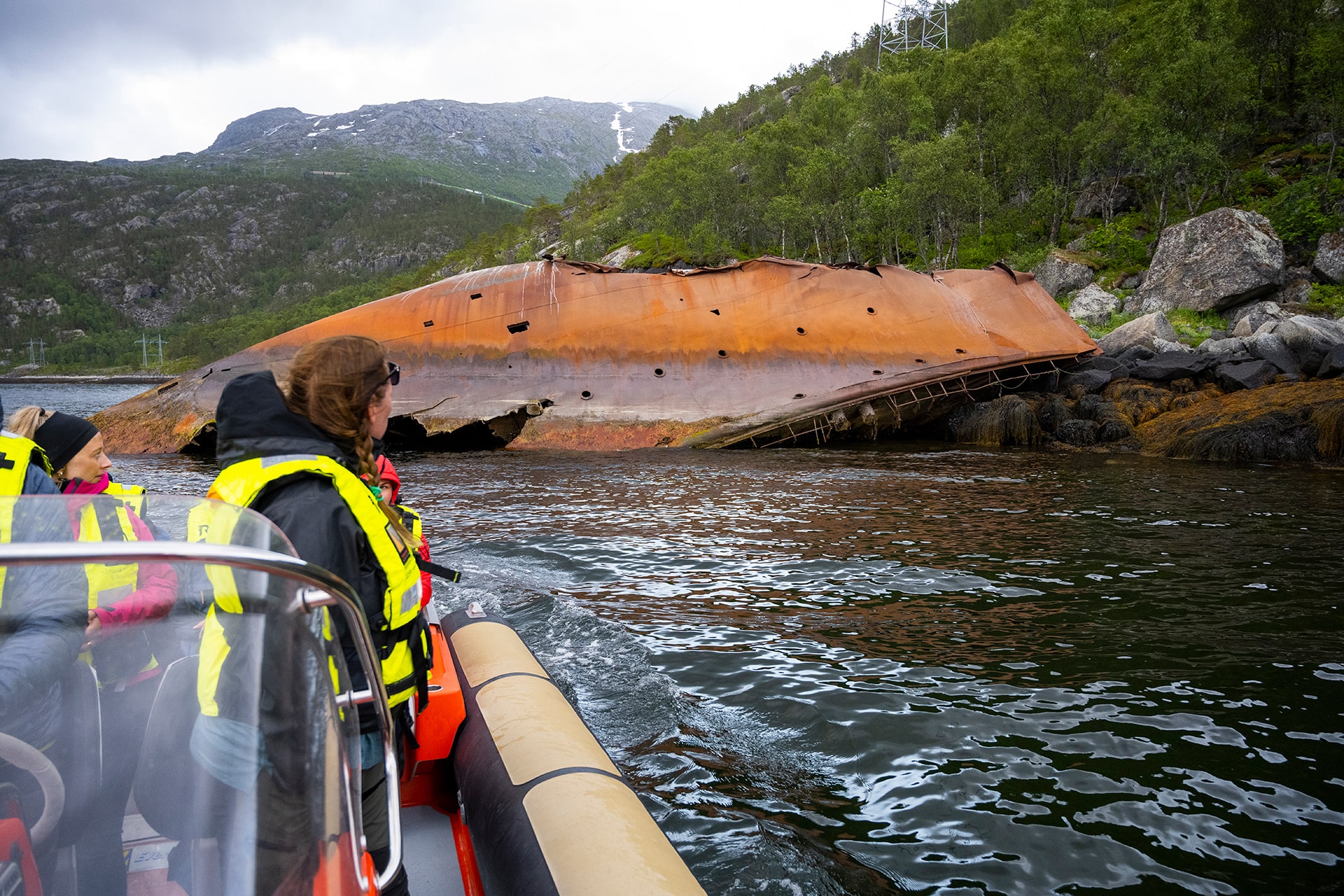
Start planning
Crossing Norway in a single day is more than just a journey; it’s an adventure that connects visitors to the breathtaking landscapes of the Ofoten Railway, the historical richness of the Navvy Road, and the serene beauty of the Rombaksfjord. Start planning your trip today and experience the unforgettable beauty of Northern Norway.







